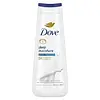What's inside
What's inside
 Key Ingredients
Key Ingredients

 Benefits
Benefits

 Concerns
Concerns

 Ingredients Side-by-side
Ingredients Side-by-side

Water
Skin ConditioningSodium C14-16 Olefin Sulfonate
CleansingPinus Densiflora Leaf Extract
AntimicrobialLauryl Betaine
CleansingSodium Chloride
MaskingAllantoin
Skin ConditioningBetaine
HumectantPanthenol
Skin ConditioningSalicylic Acid
MaskingSodium Hyaluronate
HumectantHydrolyzed Hyaluronic Acid
HumectantSodium Acetylated Hyaluronate
HumectantButylene Glycol
HumectantCentella Asiatica Extract
CleansingMelia Azadirachta Flower Extract
Skin ConditioningMelia Azadirachta Leaf Extract
Skin ConditioningGlycoproteins
Skin ConditioningSorbitol
HumectantCitric Acid
BufferingGluconolactone
Skin ConditioningAsiaticoside
AntioxidantAsiatic Acid
Skin ConditioningMadecassic Acid
Skin ConditioningMadecassoside
AntioxidantCaprylyl Glycol
EmollientCitrus Limon Fruit Extract
MaskingCitrus Nobilis Oil
MaskingLavandula Angustifolia Oil
MaskingEucalyptus Globulus Leaf Oil
PerfumingJuniperus Mexicana Oil
MaskingPinus Palustris Oil
MaskingC12-14 Pareth-12
EmulsifyingHexadecene
SolventTetradecene
EmollientTromethamine
Buffering1,2-Hexanediol
Skin ConditioningDisodium EDTA
Limonene
PerfumingWater, Sodium C14-16 Olefin Sulfonate, Pinus Densiflora Leaf Extract, Lauryl Betaine, Sodium Chloride, Allantoin, Betaine, Panthenol, Salicylic Acid, Sodium Hyaluronate, Hydrolyzed Hyaluronic Acid, Sodium Acetylated Hyaluronate, Butylene Glycol, Centella Asiatica Extract, Melia Azadirachta Flower Extract, Melia Azadirachta Leaf Extract, Glycoproteins, Sorbitol, Citric Acid, Gluconolactone, Asiaticoside, Asiatic Acid, Madecassic Acid, Madecassoside, Caprylyl Glycol, Citrus Limon Fruit Extract, Citrus Nobilis Oil, Lavandula Angustifolia Oil, Eucalyptus Globulus Leaf Oil, Juniperus Mexicana Oil, Pinus Palustris Oil, C12-14 Pareth-12, Hexadecene, Tetradecene, Tromethamine, 1,2-Hexanediol, Disodium EDTA, Limonene
Water
Skin ConditioningLauric Acid
CleansingSodium Lauroyl Isethionate
CleansingSodium Methyl Lauroyl Taurate
CleansingCocamidopropyl Betaine
CleansingSodium Hydroxypropyl Starch Phosphate
AbrasiveHydrogenated Soybean Oil
EmollientSodium Chloride
MaskingGlycine Soja Oil
EmollientParfum
MaskingGlycerin
HumectantStearic Acid
CleansingPalmitic Acid
EmollientHydrogenated Vegetable Glycerides
EmollientGlyceryl Stearate
EmollientHydroxystearic Acid
CleansingSodium Benzoate
MaskingGuar Hydroxypropyltrimonium Chloride
Skin ConditioningCapryloyl Glycine
CleansingUndecylenoyl Glycine
CleansingCitric Acid
BufferingSodium Gluconate
Skin ConditioningAlpha-Isomethyl Ionone
PerfumingBenzyl Alcohol
PerfumingCitronellol
PerfumingCoumarin
PerfumingHexyl Cinnamal
PerfumingLimonene
PerfumingLinalool
PerfumingWater, Lauric Acid, Sodium Lauroyl Isethionate, Sodium Methyl Lauroyl Taurate, Cocamidopropyl Betaine, Sodium Hydroxypropyl Starch Phosphate, Hydrogenated Soybean Oil, Sodium Chloride, Glycine Soja Oil, Parfum, Glycerin, Stearic Acid, Palmitic Acid, Hydrogenated Vegetable Glycerides, Glyceryl Stearate, Hydroxystearic Acid, Sodium Benzoate, Guar Hydroxypropyltrimonium Chloride, Capryloyl Glycine, Undecylenoyl Glycine, Citric Acid, Sodium Gluconate, Alpha-Isomethyl Ionone, Benzyl Alcohol, Citronellol, Coumarin, Hexyl Cinnamal, Limonene, Linalool
 Reviews
Reviews

Ingredients Explained
These ingredients are found in both products.
Ingredients higher up in an ingredient list are typically present in a larger amount.
Citric Acid is an alpha hydroxy acid (AHA) naturally found in citrus fruits like oranges, lemons, and limes.
Like other AHAs, citric acid can exfoliate skin by breaking down the bonds that hold dead skin cells together. This helps reveal smoother and brighter skin underneath.
However, this exfoliating effect only happens at high concentrations (20%) which can be hard to find in cosmetic products.
Due to this, citric acid is usually included in small amounts as a pH adjuster. This helps keep products slightly more acidic and compatible with skin's natural pH.
In skincare formulas, citric acid can:
While it can provide some skin benefits, research shows lactic acid and glycolic acid are generally more effective and less irritating exfoliants.
Most citric acid used in skincare today is made by fermenting sugars (usually from molasses). This synthetic version is identical to the natural citrus form but easier to stabilize and use in formulations.
Read more about some other popular AHA's here:
Learn more about Citric AcidLimonene is a fragrance that adds scent and taste to a formulation.
It's found in the peel oil of citrus fruits and other plants such as lavender and eucalyptus. The scent of limonene is generally described as "sweet citrus".
Limonene acts as an antioxidant, meaning it helps neutralize free radicals.
When exposed to air, oxidized limonene may sensitize the skin. Because of this, limonene is often avoided by people with sensitive skin.
The term 'fragrance' is not regulated in many countries. In many cases, it is up to the brand to define this term. For instance, many brands choose to label themselves as "fragrance-free" because they are not using synthetic fragrances. However, their products may still contain ingredients such as essential oils that are considered a fragrance.
Learn more about LimoneneChances are, you eat sodium chloride every day. Sodium Chloride is also known as table salt.
This ingredient has many purposes in skincare: thickener, emulsifier, and exfoliator.
You'll most likely find this ingredient in cleansers where it is used to create a gel-like texture. As an emulsifier, it also prevents ingredients from separating.
There is much debate on whether this ingredient is comedogenic. The short answer - comedogenic ratings don't tell the whole story. Learn more about comegodenic ratings here.
The concensus about this ingredient causing acne seems to be divided. Research is needed to understand if this ingredient does cause acne.
Scrubs may use salt as the primary exfoliating ingredient.
Learn more about Sodium ChlorideWater. It's the most common cosmetic ingredient of all. You'll usually see it at the top of ingredient lists, meaning that it makes up the largest part of the product.
So why is it so popular? Water most often acts as a solvent - this means that it helps dissolve other ingredients into the formulation.
You'll also recognize water as that liquid we all need to stay alive. If you see this, drink a glass of water. Stay hydrated!
Learn more about Water